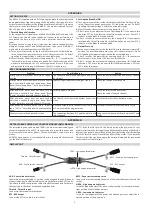
R
EVISION
:
-
D
ATE
:
12/29/04
P
AGE
:
18
Copyright
2004 Glasair Aviation, LLC Arlington, Washington All rights reserved
4-6.4 H
IGH
D
ENSITY
-A
LTITUDE
T
AKEOFF
At high density-altitude (above 4,000 ft. MSL), lean the engine during
run-up for best takeoff power. Follow the leaning procedures described
in the operator’s manual for your powerplant.
NOTE
Since every airplane is different, accurate high density-altitude
takeoff distances are difficult to predict. Many factors, such as
weight, temperature, relative humidity, altitude, engine
horsepower, type of propeller and pilot ability, affect takeoff
performance. We recommend that each builder determine
high density-altitude takeoff performance data for his own
airplane.
4-7 CLIMB
After lift-off, let the airspeed rise to at least 75 kts. 86 m.p.h.) for best
angle of climb when clearing obstacles. Once clear of obstacles, or if
no obstacles are present, lower the nose and let the aircraft accelerate
to at least the best-rate-of-climb airspeed of 85 kts. (97 m.p.h.).
Two important considerations may dictate a climb speed faster than the
best-rate speed: engine cooling and visibility. Pay close attention to
engine temperatures during climb; temperatures can exceed the normal
ranges if the airspeed is too low on hot days. Therefore, a higher-than-
normal climb speed might be required on hot days.
Additionally, at its best-rate-of-climb airspeed, the attitude of the
















































